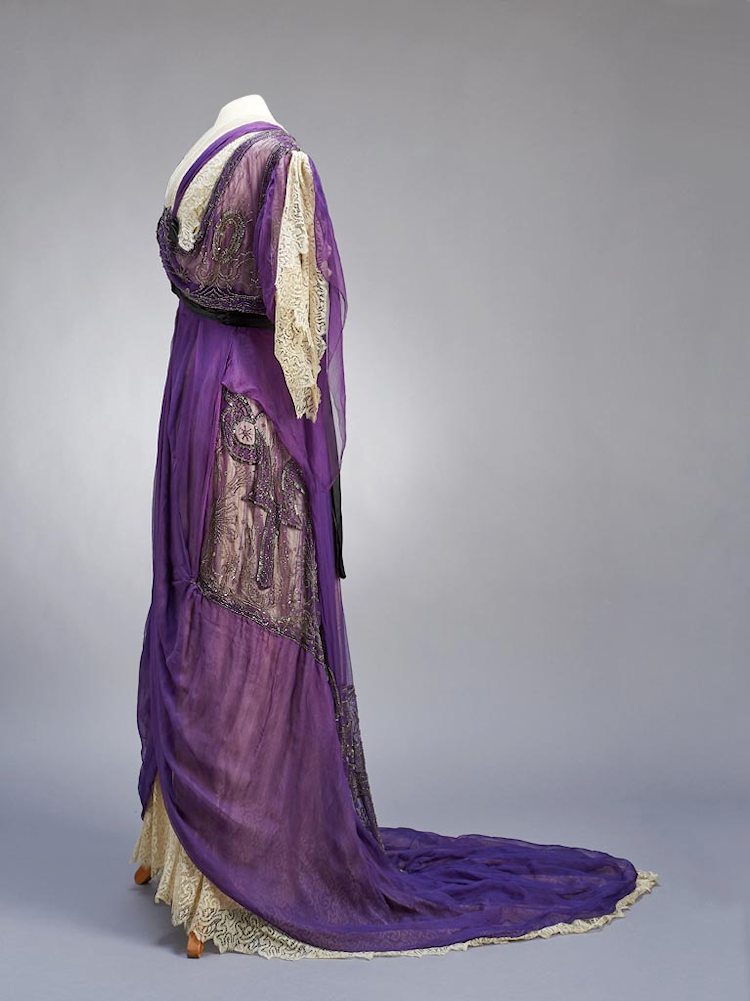I have a particular fondness for the evening gowns that appeared on the brink of WWI. Designs that were often following and expanding on trends that were sparked by the contemporary visual sensations of the Ballets Russes. They typically comprise a new, leaner silhouette; clinging draperies; layered and multi-level skirts; asymmetry; bold color and in often strongly contrasting combinations; delicate, but often lavish ornamentation.
Rather than being created from a sketched out and patterned design, these gowns frequently give the impression of having been built up bit by bit, layer upon layer, pieced together from often very disparate materials, until the designer at last called them finished. So fragmentary, as a result of their apparent manner of assembly, the completed garments often look put together out of extra yardage and scraps of lace and embroidery left about the workroom; indeed, that may even have sometimes happened.
This gown is an interesting example of the period. And I find it fascinating, to my eye equal parts exquisite and awkward. Layered over a cream colored silk undergarment, it's an assemblage of purple georgette, both plain and delicately beaded with clear glass beads, rather crude looking lace, and a sort of sash in black satin. The georgette is alternately draped and gathered up and left to hang loosely. Elements begin, stop abruptly, then start again. The massing of elements at the bust is a bit bulky, and then there's that odd "tail" of black satin hanging down at the back.
But then when I think of this worn? Gracing a woman's body, not the hard, armless mannequin? I think of it in motion. I imagine it moving very gracefully as the woman walked across the floor, as she descended a staircase, as she danced. I think with movement it would make a very delicate and feminine picture.
It wasn't only the still-remembered couturiers like Lucile and Paquin and Boué Soeurs who created these ephemeral concoctions, but dressmakers all over the world, nearly all of them now forgotten. Such as the maker of this gown, a product of the Trieste branch of the Viennese Maison Sitich.















Gorgeous gown!
ReplyDelete